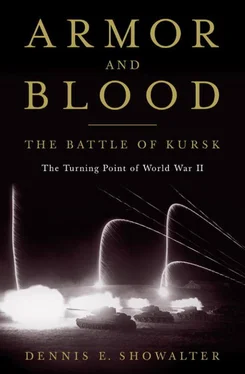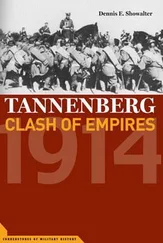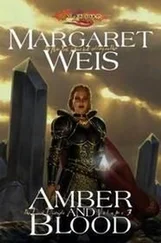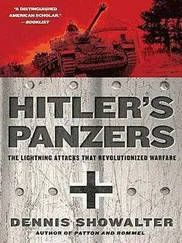No less significant was the rapid development of radio—and the accompanying sense that commanders of mobile forces could and must be at the head of their units. Helmuth von Moltke the Elder’s familiar aphorism that “no plan survives contact with the enemy” acquired a new context. In the future, mechanized commanders and mechanized forces would be able to make, remake, and implement plans immediately reflecting changing situations. War by timetable in the fashion of 1914–18 would become war by stopwatch.
The critique of mass war developed in German military thought after 1918 had never excluded numbers per se. Its goal had been the eventual creation of a force able to achieve decisive tactical and operational results initially, thus avoiding the spiral of escalation forcing Germany into a war of attrition—exactly the kind of war the professional soldiers had warned for decades that Germany had no chance of winning. The army that took the field, however, was the product of improvisation. The steady pace originally projected by the general staff and the high command was submerged by a rearmament that rapidly became its own justification and increasingly outran available human and material resources. Even after the Blood Purge of 1934 eliminated the possibility of using the Sturmabteilung (SA), the paramilitary brownshirts, as the basis for an alternative military system, the army continued to fear dual loyalty in an increasingly Nazified society. Total war of the kind Hitler seemed willing not merely to risk but to affirm remained in strategic terms the wrong kind of war for Germany. And in social/political contexts, a mass war involving the German Volk was likely to benefit the Nazis far more than the soldiers.
Since the Napoleonic Wars, the Prussian/German army had stressed the desirability of a high average. The general staff developed as a leaven to the officer corps as a whole, rather than as a self-absorbed elite. In operational terms, one regiment, division, or corps had been considered as capable as any other. When reserve divisions were organized on a large scale as part of the run-up to World War I, they were structured as far as possible to the active army’s norms and from the beginning used in the same way as active formations. In 1939, however, most of the divisions were formed by “waves” ( Wellen ), each with differing scales of equipment, levels of training, and operational effectiveness. Now, in planning for war, the army had developed a hierarchy of dependability, with the peacetime divisions of the “first wave” at its apex—and the mobile divisions at the apex of the first wave.
That situation offered the army a political and military window of opportunity. The tactical, doctrinal, and institutional concepts developed by the Reichswehr and refined after 1933 provided the prospect of decisive offensive operations executed not by a small professional army, but by specialized technocratic formations within a mass. High-tech force multipliers favored developing an elite—not in the racial/ideological sense, but a functional elite, based on learned skills. Its professionalism would enable the employment of ways of war, inapplicable by homogenized mass armies in the pattern of 1914–18, that would produce victories.
Soldiers and academics alike in recent years have been at pains to discredit and deconstruct the concept of blitzkrieg. Reduced to its essentials, the critique is that the German victories of 1939–41 were not consequences of doctrine or planning. They developed from a series of accidents and coincidences reflecting improvisations born of the necessity to avoid a war of attrition and responding to imperatives generated by the random nature of the National Socialist regime.
Blitzkrieg was not a comprehensive principle for mobilizing and employing Germany’s resources. Nor was it a structure of concepts expressed in manuals, taught in schools, and practiced in maneuvers. To say that blitzkrieg was an ex post facto construction nevertheless makes as much sense as to assemble the components of a watch, shake the pieces in a sack, and expect to pull out a functioning timepiece. Blitzkrieg was the latest manifestation of mobile war, the historic focus of Prussian/German military planning that Seeckt and his contemporaries sought to restore after 1918. Blitzkrieg also gave a technologically based literalness to an abstract concept. Mobile war waged with human and animal muscle power had always been more of an intellectual construction than a physical reality. In blitzkrieg, the combination of radios and engines made it possible for an army literally to run rings around its enemy—if, and it was a big if, its moral and intellectual qualities were on a par with its material.
Between 1939 and 1941, that was the case from France and Belgium to Yugoslavia and Cyrenaica. The stresses of making war in Russia, however, transmuted blitzkrieg’s strengths to its weaknesses. Production lagged behind expenditures. Casualties exceeded replacement capacities. The gap in capabilities and effectiveness between the mechanized elite and the foot-marching, horse-drawn infantry divisions grew into a chasm. One consequence was the progressive devolution of the mechanized forces from spearhead to backbone: the necessary element of every operation from holding the front in the winter of 1941 to leading the way street by street in Stalingrad a year later. Infantry divisions remained so chronically understrength that by 1943 they were in the process of being reduced to six battalions instead of the original nine. New weapons like the MG-42 light machine gun and a family of man-portable antitank rockets enhanced the infantry’s firepower. But the reconfigured divisions lacked the staying power to sustain operations, offensive or defensive, against a Red Army increasingly able to depend on more than its own determination.
As the panzers became more of an elite, their responsibilities expanded beyond any original intentions. The mobile divisions were increasingly expected to use their own resources to hold ground, recover it, and secure it, at the expense of generating and sustaining offensive momentum. By the end of the winter fighting in 1942, the eighteen panzer divisions on the Russian front had a combined strength of only around six hundred serviceable tanks. The shortages of trucks and other supporting vehicles were even greater. Replacing casualties and equipment had become a haphazard process—almost random, depending on which division could be pulled off the line, how far back it could be moved, and what was available in the depots and workshops.
A second consequence was tunnel vision: a focus on “hitting the next target,” an emphasis on action at the expense of reflection at all levels and in all aspects of war making. Prussian/German military planning historically tended to devolve downward, privileging operational art at the expense of strategic projection and privileging tactical virtuosity at the expense of both. A chronic shortage of staff officers at all levels, often uncritically praised as reflecting a “lean and mean” profile, in practice too often meant chronic overwork and no time to think about next week. Improvisation was a necessity in the German way of mobile war. But improvisation on the Eastern Front too often tended to the verge of randomness—and beyond.
Third, and arguably most serious in the long run, was a culture, a mentality, that had developed into something combining convenience and indifference, embedded in a matrix of “hardness.” Hardness was neither cruelty nor fanaticism. It is best understood as evolving from prewar concepts, as will focused by intelligence for the purpose of accomplishing a mission. It was a mind-set particularly enabling the brutal expediency that is an enduring aspect of war and was underwritten and nurtured by Nazi ideology.
Читать дальше












